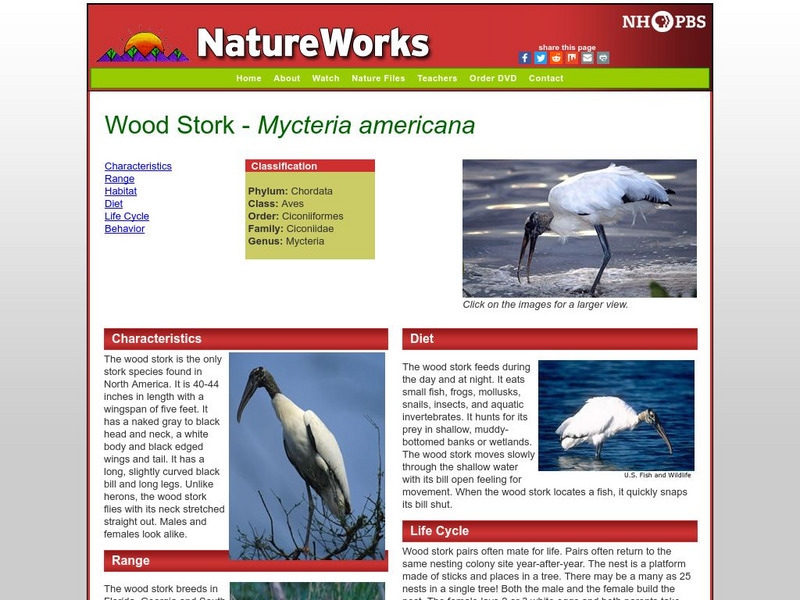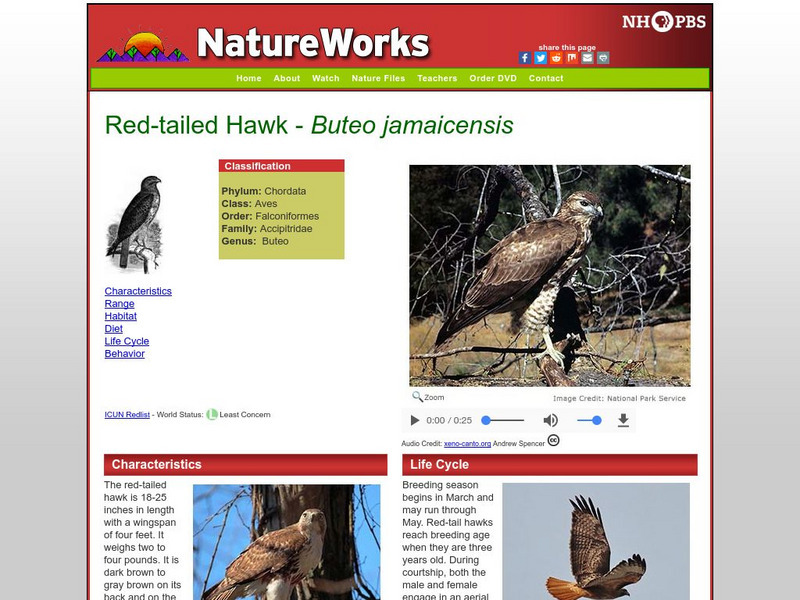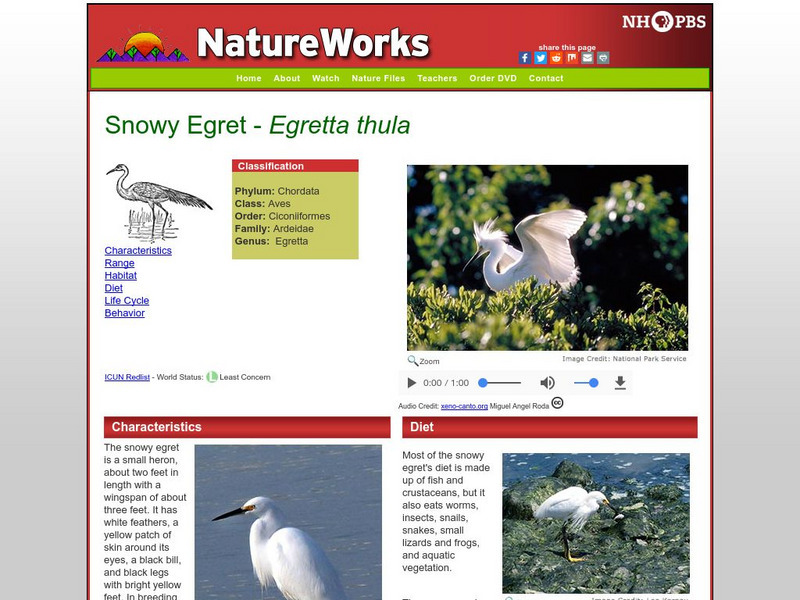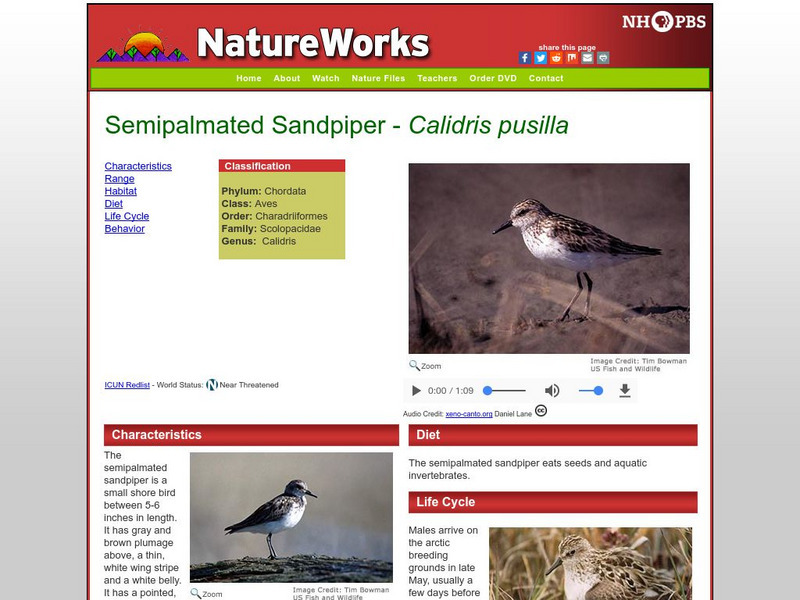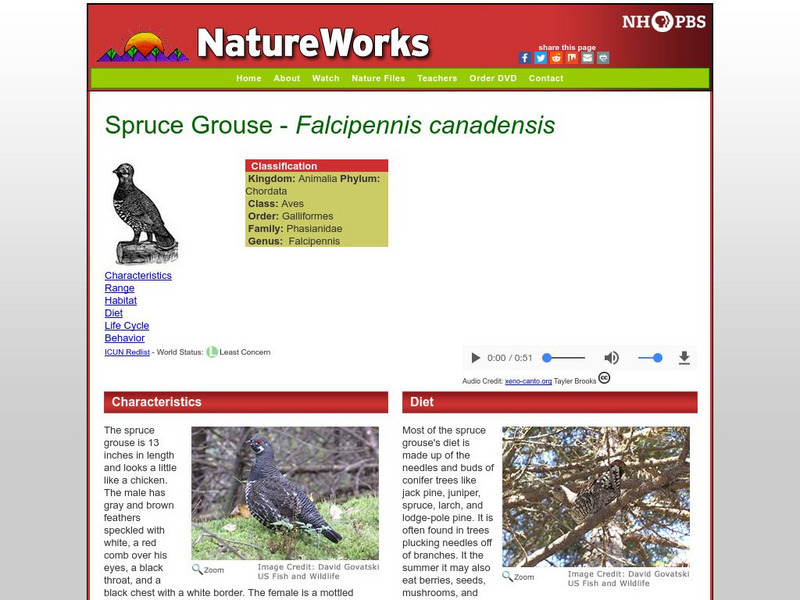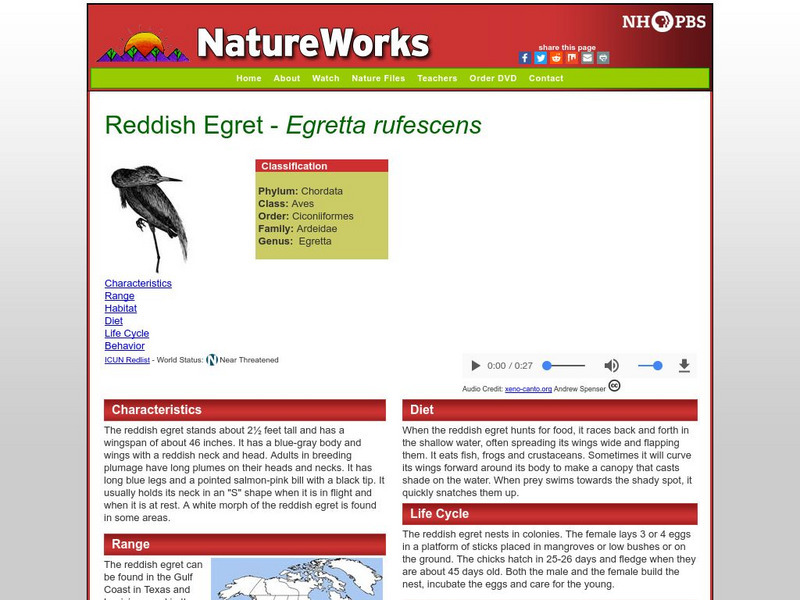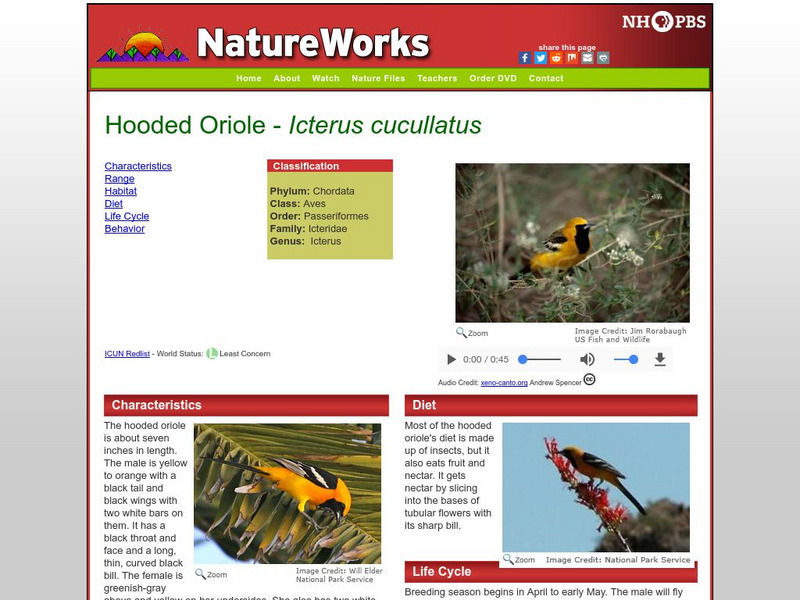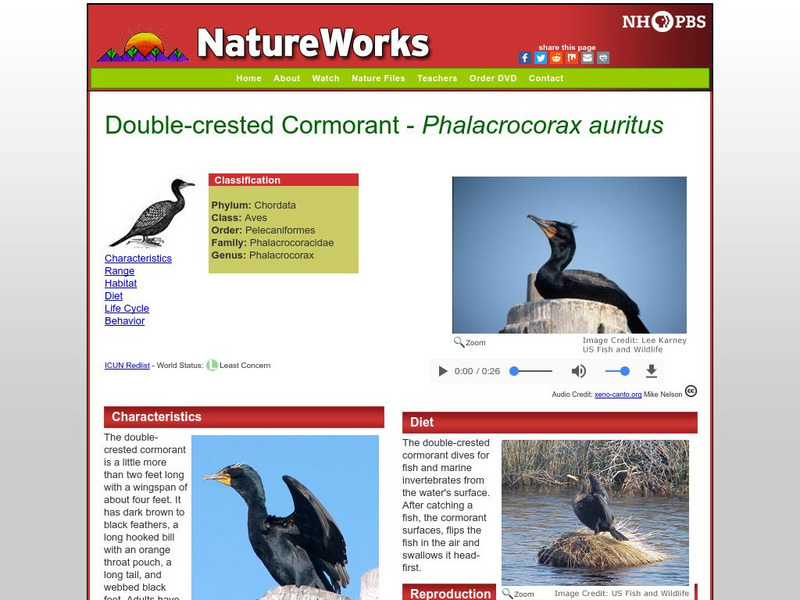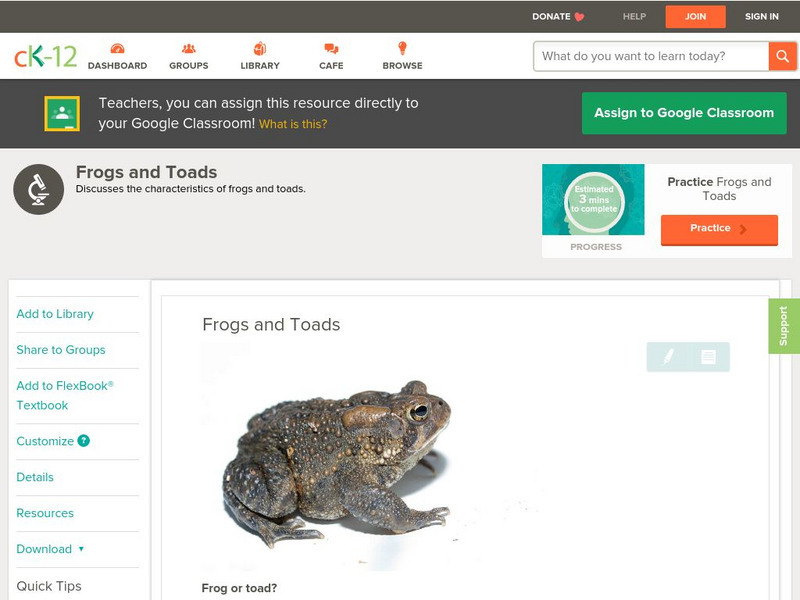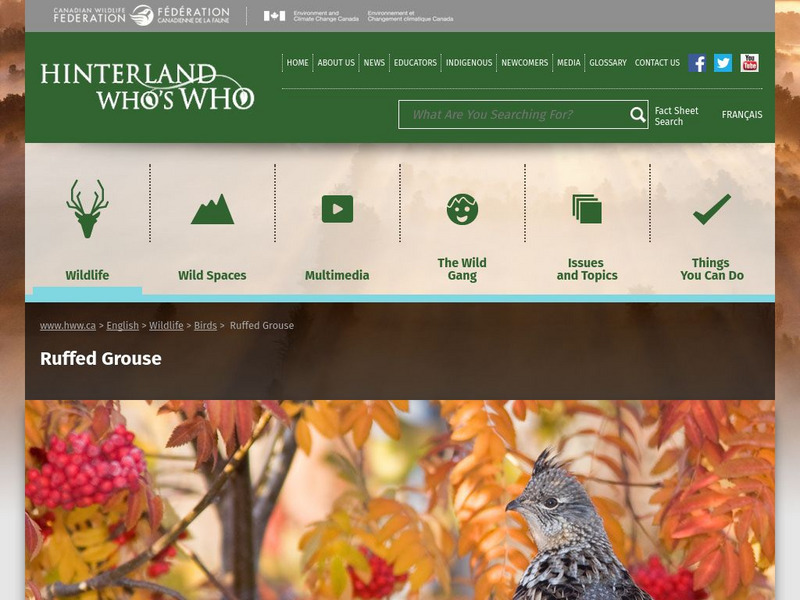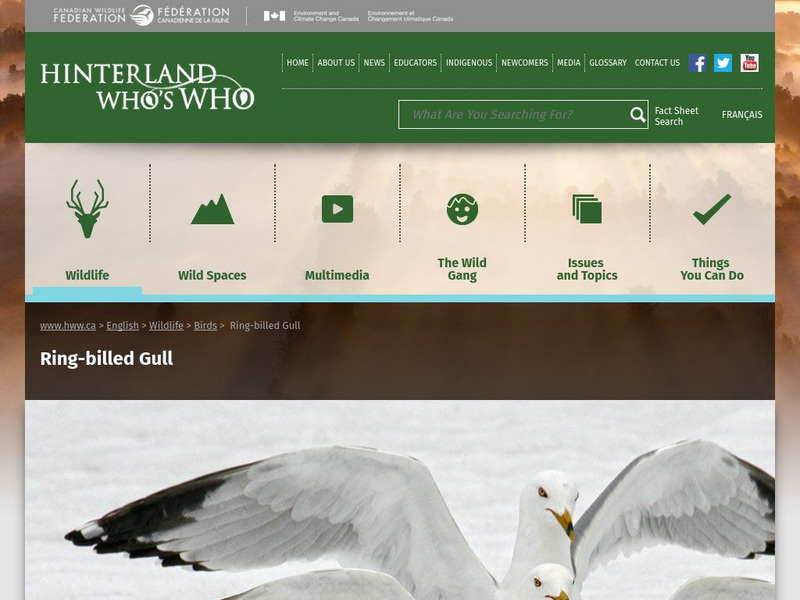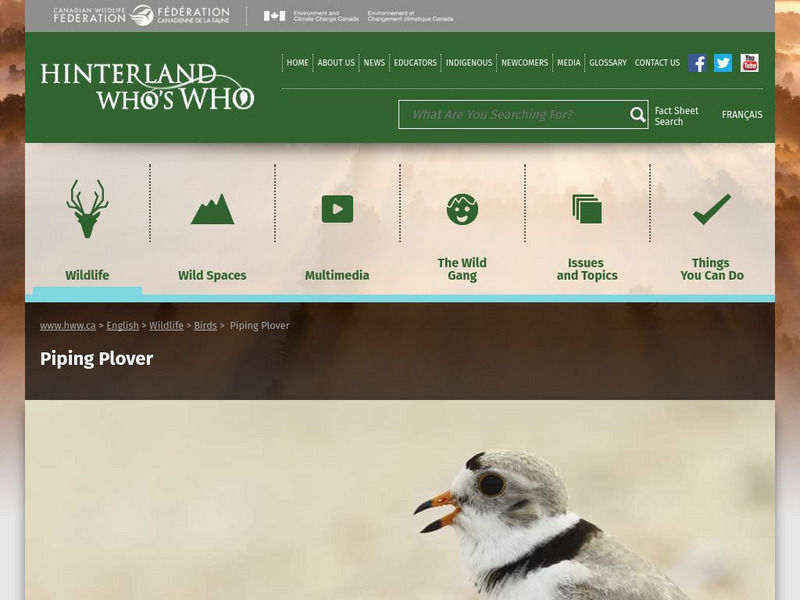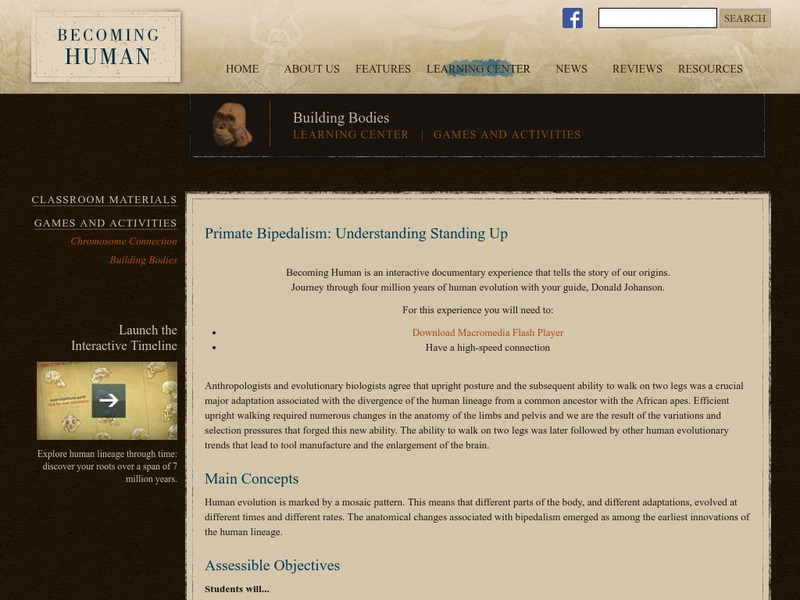Hi, what do you want to do?
PBS
Nh Pbs: Nature Works: White Tailed Ptarmigan
Explore the world of the White-tailed Ptarmigan when you check out this educational resource. The content of this resource includes a look at this species' characteristics, range, habitat, diet, life cycle and more.
PBS
Nh Pbs: Nature Works: Wood Stork
Learn more about the Wood Stork through this educational source. Students will discover more about this wading bird's characteristics, life cycle, behavior, diet and more.
PBS
Nh Pbs: Nature Works: Yellow Crowned Night Heron
Come and check out this educational resource featuring the Yellow-crowned Night Heron. This site identifies the characteristics, life cycle, diet, habitat, range, behavior and photographs of this aquatic bird.
PBS
Nh Pbs: Nature Works: Red Tailed Hawk
Explore the world of the Red-tailed Hawk when you visit this source. Students and teachers will learn more about this hawk's characteristics, life cycle, photographs, habitat and more.
PBS
Nh Pbs: Nature Works: Snowy Egret
Come and check out this fascinating resource featuring information on the Snowy Egret. You can learn more about this aquatic bird's characteristics, life cycle, habitat, diet, behavior and range when you visit this site.
PBS
Nh Pbs: Nature Works: Roseate Spoonbill
This overview of the Roseate Spoonbill provides a photograph along with other important information. The content of this resource includes a look at this species' characteristics, range, habitat, diet, life cycle, and behavior.
PBS
Nh Pbs: Nature Works: Dunlin
Learn more about the dunlin when you check out this educational resource. Students will discover information ranging from characteristics and range to diet and life cycle.
PBS
Nh Pbs: Nature Works: Semipalmated Sandpiper
Explore the world of the Semipalmated Sandpiper. Students and teachers will benefit from this clear and concise resource. The concepts included in this source are characteristics, life cycle, behavior, diet, range, and habitat.
PBS
Nh Pbs: Nature Works: Sanderling
Find out more about the Sanderling through this educational site. The content of this resource includes a look at this aquatic bird's characteristics, life cycle, habitat, diet and more.
PBS
Nh Pbs: Nature Works: Spruce Grouse
This resource provides you with a clear and concise look at the Spruce Grouse. Students will explore information ranging from characteristics and diet to life cycle and behavior.
PBS
Nh Pbs: Nature Works: Reddish Egret
Find out what characteristics make the Reddish Egret unique. This resource features information about this aquatic bird found in the Gulf Coast in Texas and Louisiana and in the Gulf and Atlantic coasts of southern Florida.
PBS
Nh Pbs: Nature Works: Hooded Oriole
What makes the Hooded Oriole unique? Find out when you visit this educational resource featuring information ranging from diet and habitat to behavior and life cycle.
PBS
Nh Pbs: Nature Works: Double Crested Cormorant
Find out more about the double-crested cormorant through the exploration of this resource. You will learn more about the characteristics, range, life cycle, diet and habitat of this aquatic bird.
ClassFlow
Class Flow: Marine Mammals
[Free Registration/Login Required] This flipchart discusses the characteristics and classifications of marine mammals. It focuses specifically on whales. Assessment questions using Activotes are included.
Enchanted Learning
Enchanted Learning: Salmon Life Cycle
Educational site offers an illustration of the salmon life cycle as well as information on salmon reproduction, adaptation to salt water, life span, diet, anatomy, predators and more.
Earth Life
Earth Life Web: Bird Orders of the World
At this site from Earth-Life Web, you can find a list of 23 bird orders and additional facts on each species. Taxonomy and photos are included.
CK-12 Foundation
Ck 12: Life Science: Frogs and Toads
[Free Registration/Login may be required to access all resource tools.] Frogs and toads are amphibians in the order Anura. In terms of classification, there is actually not a big difference between frogs and toads. Learn more about frogs...
Alabama Learning Exchange
Alex: Wanted Dead or Alive!
In this lesson students will identify the characteristics of living and nonliving things.
Canadian Wildlife Federation
Hinterland Who's Who: Semipalmated Sandpiper
Get the facts about the Semipalmated Sandpiper. Besides finding a detailed physical description of this shorebird, you?ll also learn about some of its unique facts and characteristics. Also included in this Bird Fact Sheet on the...
Canadian Wildlife Federation
Hinterland Who's Who: Ruffed Grouse
Get the facts about the Ruffed Grouse. Besides finding a detailed physical description of this woodland bird, you?ll also learn about some of its unique facts and characteristics. Also included in this Bird Fact Sheet on the Ruffed...
Canadian Wildlife Federation
Hinterland Who's Who: Ring Billed Gull
Get the facts about the Ring-billed Gull. Besides finding a detailed physical description of North America?s most abundant gull, you?ll also learn about some its unique facts and characteristics. Also included in this Bird Fact Sheet on...
Canadian Wildlife Federation
Hinterland Who's Who: Piping Plover
Get the facts about the Piping Plover. Besides finding a detailed physical description of this bird, you?ll also learn about some its unique facts and characteristics. Also included in this Bird Fact Sheet on the Piping Plover is...
WebMD
Web Md: Malaria
Information on malaria is found at WebMD. The article gives an overview of how it is transmitted, symptoms, prevention, and treatment while links are provided for more in-depth information on the disease. This is a great site to get...
Other
Institute of Human Origins: Classifying Life
In this exercise you will build two skeletons, one of an ape and one of a modern human being. The bones have been completely mixed up so its up to you to find the right fit. In this exercise you will learn about the unique...






